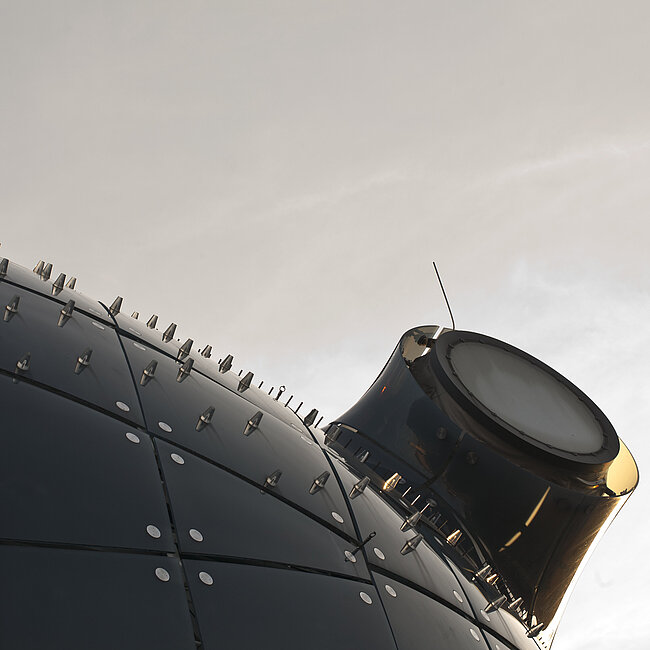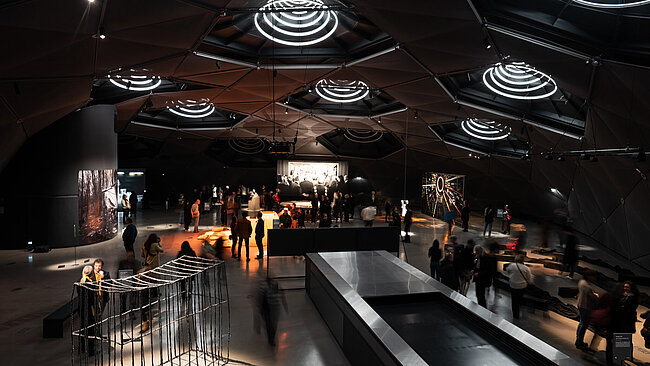Bubble – The Bubble is the blue corpus of the Kunsthaus Graz, whose biomorphous structure floats over the light, airy lobby and nestles organically into the existing architectural fabric of the inner-city conservation area. It is clad in a total of 1,288 blue-tinted, semi-transparent Plexiglass panes, with 1,100 of them on the outside and 188 inside the Kunsthaus Graz.
Eisernes Haus – The Eisernes Haus (Iron Building) completed in 1848 was the first cast-iron structure in Austria and one of the earliest cast-iron buildings on the European mainland. Designed by architect Josef Benedict Witthalm (1771-1864), the building is innovative for the period not only in the novel structure but also in its large window apertures and flat roof. These form a lively correlation with the distinctive architecture of the Kunsthaus Graz.
Needle – The Needle rests on the Bubble. It is a 40m/131’ long glazed gallery linking the old Eiserne Haus (the historic, listed part of the Kunsthaus Graz) and the new Bubble. The Needle was designed as a viewing gallery, offering our visitors a splendid view of both the old city of Graz and the Kunsthaus Bubble.
Nozzle – Sixteen ‘nozzles’ project from the fabric of the Bubble, fifteen of them facing north, one looking east towards the Clock Tower, the traditional emblem of the city, therewith setting up a dialogue between the old and new emblems of the Styrian capital.
Skin – Beneath the blue Plexiglass panes of the cladding of the Friendly Alien is a fine-mesh matt-grey wire-weave broken down into triangles. Together they form a homogeneous smooth surface. As with the human body, there are muscles and vein systems beneath the skin. In the Kunsthaus, these take the shadowy, discernible form of the steel frame and vital technical installations.
Travelator – The travelator, also called ‘Pin’, is a 30m/100’ moving walkway carrying visitors from the light, airy lobby up into the belly of the Friendly Alien.








































